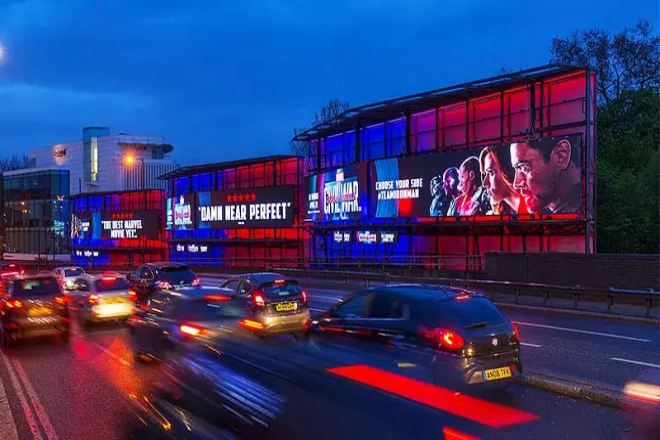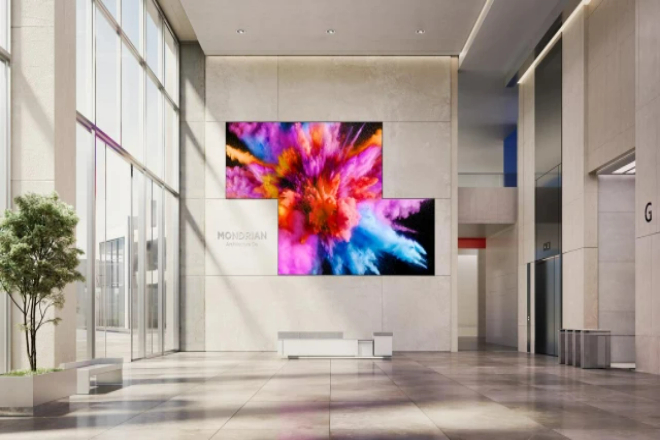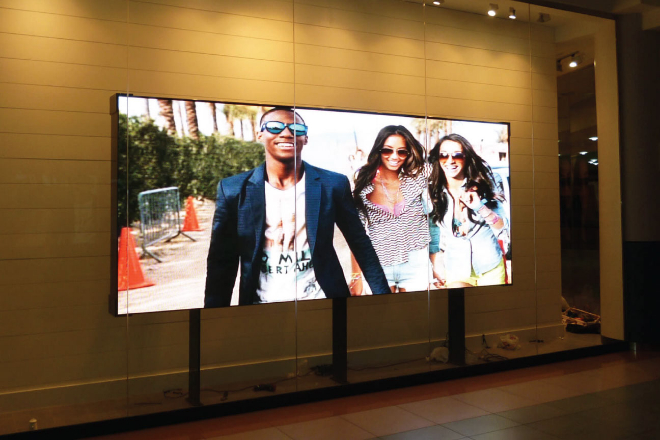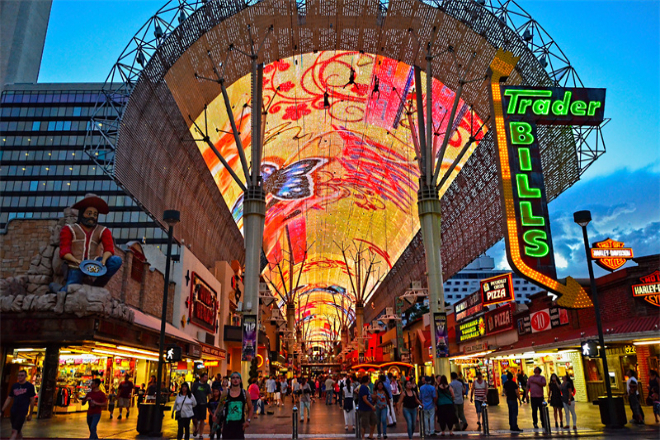Introduction

The installation and acceptance of the LED display is a complex and meticulous process, which is not only related to the use effect of the display but also directly affects the interests and experience of the user.
Therefore, ensuring that the acceptance work of the LED display after installation is scientific, standardized, and rigorous is crucial to ensure the quality and performance of the display. So, as a user of the LED display, how should the LED display be accepted?
1. Preparation before acceptance of the LED display
1). Familiar with the terms of the contract
Before accepting the LED display, you have to go through the terms in the contract carefully. Especially the part about the net display area of the display, which is related to our actual use effect. The net display area is the effective display area of the LED screen, excluding the size of the outer frame or the edge.
We have to take out the tape measure and measure it on the spot to see if it is the same as what is written in the contract. Don’t wait until the installation is completed to find that the area is wrong; then, it will be troublesome.
In addition to the area, the size of the LED display module and the pixel density of the large screen are also the focus of your attention. The module size must match the contract, and the pixel density must meet the requirements to ensure the clarity of the display.
Also, the model of the LED full-color display screen must be confirmed to prevent some bad manufacturers from replacing the original with a low-end model to pretend to be a high-end one.
In addition, the number of accessories must be checked clearly. The display unit module, power supply, and wires are all essential for the normal operation of the display screen. You have to see how much is written in the contract and how much is actually received.
Spare parts must also be prepared so that if there is any problem in the future, they can be replaced in time.
2). Prepare acceptance tools
Acceptance tools are also essential. Tape measure, angle ruler, brightness meter, all of these must be prepared. The tape measure is used to measure the size to see if the size of the display screen and module is the same as in the contract.
The angle ruler is used to check the installation angle of the display screen to ensure that it is installed flat. The brightness meter is even more important, used to measure the brightness of the display screen to see if it is bright enough and whether it can meet our usage needs.
In addition, the signal source must be prepared. HDMI, VGA, and other interfaces must be equipped with stable signal sources.
You need to test whether the signal transmission is stable and whether the picture is clear. Don’t wait until you use it to find out that there is a problem with the signal transmission because then it will be too late.
Therefore, the preparation work before acceptance must be done well, the contract terms must be familiar, and the acceptance tools must be fully prepared. This will ensure that you can fully and accurately evaluate the performance and quality of the LED display when you accept it.
2. Appearance inspection of LED display

1). Overall appearance
First, you have to look at the LED display as a whole. It should be flat and without deformation, and there should be no obvious scratches or damage on both the screen itself and the frame.
You can carefully observe every corner of the screen and touch it gently with your hand to feel its flatness. If deformation, scratches, or damage are found, then this display may not meet our requirements.
Let’s talk about the frame and shell. The frame should be firm and not shaky, the connection of the shell should be tight, and there should be no obvious gaps.
You can gently shake the display to see if the frame and shell are stable. In addition, all connecting wires must be firm and reliable, and there should be no looseness or falling off. These details are related to the service life and stability of the display, so we must not ignore them.
2). Screen surface
Next, you need to carefully check the screen surface. The screen surface should be clean and tidy, without obvious signs of dirt or wear.
You can find a clean, soft cloth and gently wipe the screen surface to see if the stains can be wiped off. If the stains cannot be wiped off or the screen surface is worn, the appearance of this display screen is not up to standard.
In addition to being clean and tidy, the flatness of the screen surface is also very important. You visually require no protruding or concave color blocks, which means that the screen surface should be very flat.
In order to judge the flatness more accurately, you can use professional measuring tools to measure. Generally speaking, the surface flatness needs to be controlled within ±1mm to ensure the display effect and viewing experience of the display.
In summary, for the appearance inspection of the LED display, you need to start with the overall appearance and the screen surface. Only by ensuring that these two aspects meet the requirements can we use this display screen with confidence. Therefore, when conducting acceptance, you must take the appearance inspection seriously and not be careless.
3. Detection of the display effect of the LED display
1). Brightness and color
First, you need to check whether the brightness of the LED display is uniform, and there should be no bright spots or dark areas.
For indoor full-color screens, the brightness should reach more than 800cd/m², while the brightness of outdoor full-color screens should be higher due to the need to resist strong light interference, usually above 1500cd/m² (the specific value can be adjusted according to the actual installation environment and usage requirements).
In addition, color display is also key, requiring accurate color without color cast, high color reproduction, and presenting a realistic and bright picture effect. We can test this by playing colorful videos or pictures.
2). Viewing angle and contrast
The viewing angle of the LED display should be wide, the image and color should be clearly visible from different angles, and the viewing angle difference should be small. This means that no matter where the audience stands, they can get a good viewing experience.
In addition, contrast is also an important factor in evaluating the display effect. The contrast should be moderate, and the picture layering should be strong so that the audience can more clearly distinguish the elements in the picture.
4. Detection of LED display function

1). Signal transmission stability
First, you need to check the signal transmission stability of the LED display. This includes whether the signal inputs, such as HDMI and VGA, are stable and reliable. During the test, we should closely observe the image display to ensure that there is no delay, flickering, or loss.
The real-time stability of signal transmission can be tested by playing dynamic videos or quickly switching the screen. If the signal transmission is unstable, it will affect the viewing experience and may even cause errors or omissions in the communication of information.
2). Control system test
Next, you need to test the control system of the LED display. The control system is the brain of the LED display, responsible for processing and transmitting display data and controlling the display content of the screen.
We need to check whether the control system is convenient, sensitive, and functional. Specifically, you can test functions such as switching screens and adjusting parameters to see whether the operation is smooth and the response is fast.
An excellent control system should be able to provide users with a convenient operating experience while ensuring the stable operation of the display.
3). Multiple input source support
In addition, you also need to check whether the LED display supports multiple input sources. Modern LED displays usually support multiple input methods, such as VGA and HDMI, to meet the needs of different devices.
We need to test whether the screen can switch and display the content of these input sources normally. The compatibility and stability of the screen can be tested by connecting different devices such as computers, DVD players, etc.
4). Playback effect
Finally, you need to play various contents to test the playback and display effects of the LED display. This includes text, pictures, videos, and other types of content.
We need to carefully observe the smoothness and display effect during playback to ensure a good viewing experience. Specifically, you can check whether the picture is clear, the color is accurate, and the dynamic effect is smooth. An excellent LED display should be able to present realistic and bright picture effects while ensuring the smoothness and stability of playback.
5. Safety test for LED display
In the acceptance process of LED displays, safety and durability testing are links that cannot be ignored. These two aspects are directly related to whether the display can operate stably for a long time and the safety during use.
Speaking of safety, we first have to see how the grounding protection of the shell of each box is done. Grounding protection is the first line of defense against safety hazards such as static electricity and leakage. Each box must be grounded, and the grounding resistance must be less than 0.1 ohms to ensure that the grounding effect is good.
It must also be able to withstand a high voltage of 1500V for 1 minute without breakdown so that it can be considered truly safe and reliable. In addition, the high-voltage input terminal and the high-voltage wiring of the power supply, which are prone to danger, must be affixed with eye-catching warning signs.
The signs must be firm and clear so that people can see them at a glance and to remind the operator to pay attention to safety and avoid accidents.
6. Precautions

When accepting the LED display, there are several key points that you must keep in mind to ensure that everything goes smoothly and the subsequent use is worry-free.
First of all, you have to be like a detective during the acceptance process, with your eyes wide open and your heart careful. Once you find any problems, no matter how big or small, you must write them down quickly. How the problem occurred, where it occurred, what the possible reasons are, and how big the impact is all of these must be made clear.
Then, you must contact the installer quickly, explain the problem to them, and discuss how to solve it together. Don’t drag it out; the problem will get bigger and bigger, and there will be more trouble at that time.
Let’s talk about self-acceptance. When you accept it, you must be more comprehensive and detailed, just like buying something for your own home. The appearance, performance, function, and safety of the display screen must all be carefully looked at.
We need to check whether the picture is clear, whether the brightness is uniform, and whether the color is correct. In addition, we need to check whether the structure of the display screen is firm and whether the electrical aspects are safe. We can’t be careless and make sure that all aspects of the display screen meet our requirements.
Finally, the information must be kept confidential during the acceptance process. Acceptance records, test reports, and problem feedback sheets must be properly kept. These materials will be used a lot in the future. For example, if there is a problem with the display screen, you have to check the previous information to see what happened.
If there is any dispute with the installer, these materials can also be used as evidence. So, you have to build a file system and put the information in different categories so that it is convenient to find.
Conclusion
The acceptance of LED display screens is a systematic and comprehensive process involving appearance, display effects, hardware and electrical systems, signal transmission and playback effects, installation and protection performance, etc.
Through scientific acceptance methods and professional tools, combined with strict acceptance processes and professional personnel, it can be ensured that the quality and performance of LED display screens meet the expected requirements.
At the same time, the successful completion of the acceptance work also provides a strong guarantee for the subsequent after-sales service and use.
Finally, if you want to know more about LED display screens, please get in touch with us.
